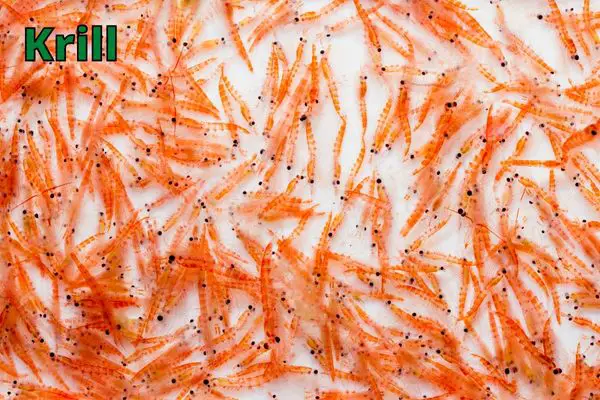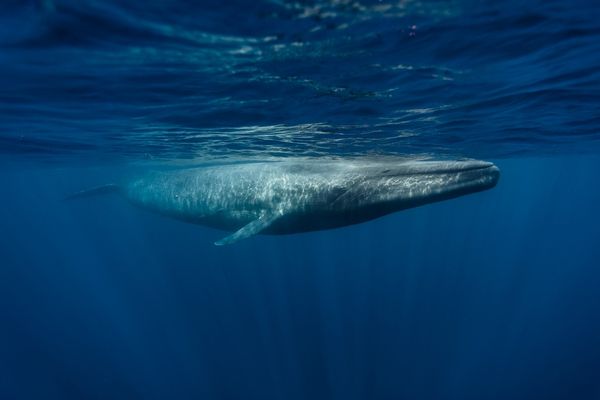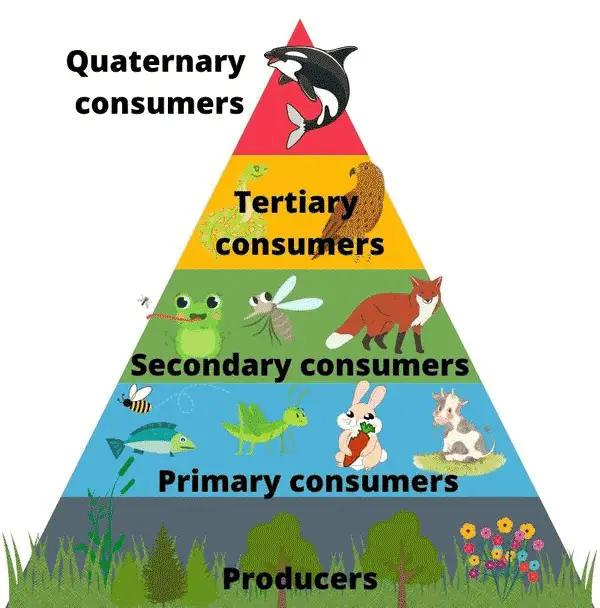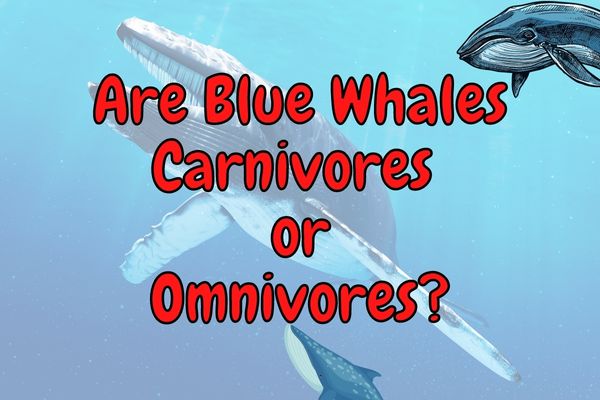Blue whales are the largest animals on the planet and can weigh up to 150 tons. These massive creatures are actually gentle giants and have a diet that consists mostly of krill – tiny shrimp-like crustaceans. A single blue whale can eat up to 40 million krill in a day!
Blue whales are primarily carnivores, eating mostly krill and small animals. But they are actually considered to be opportunistic omnivores because they will also consume large amounts of phytoplankton (microscopic algae) and other small organisms that are not animals!
The diet of a blue whale changes with its location and the time of year. In colder waters, they primarily eat krill, while in warmer waters they will eat more fish. Their diet also varies depending on their stage in life; for example, calves will consume more milk than adults.
Blue whales are found in all the world’s oceans but prefer deep waters and they tend to stay in deep waters near the coasts. In the summer, they are often found in Arctic waters. In the winter, they migrate to tropical or subtropical waters to give birth to their young.
Blue whales can grow to over 100 feet long and weigh 330,000 pounds. They generally live 80 to 90 years, some have lived over 100 years and give birth to one calf every 3–5 years.
Despite their size, blue whales are very shy animals. They are often seen alone or in small groups, and rarely approach boats or humans. For this reason, not much is known about their behavior or how they communicate with each other.
However, we do know that they migrate long distances every year between feeding grounds near the poles and calving grounds near the equator.
Blue whales can consume about 16 tons of food per day. They feed by filtering out small animals and algae such as krill and plankton, then swallowing them, and pushing the leftover water out of their mouths with their tongues.

Krill are crustaceans like shrimp, crabs, and lobsters and are somewhat related to the insects found on land.
So next time you’re out on the ocean, keep your eyes peeled for these gentle giants!
Why are Blue Whales Important for the Ecosystem?
As the largest animals on the planet, blue whales play an important role in maintaining the health of ocean ecosystems.
As filter feeders, they consume large quantities of krill and other small marine creatures, helping to keep populations in check. By doing so, they indirectly help to maintain kelp forests and other habitats that their prey rely on.
In addition, blue whales help to aerate the ocean by swimming to the surface and then diving back down again. This helps to circulate nutrients and oxygen which are essential for life in the ocean.

The loss of blue whales would have a devastating effect on ocean ecosystems. Without them, krill and other small marine creatures would flourish unchecked, eventually leading to a decline in kelp forests and other habitats.
In addition, the lack of blue whales would cause an increase in the circulation of nutrients and oxygen to other animals in the ocean, which could lead to disruptions all the way down the food chain and eventually the death of marine life.
Are Blue Whales Carnivores, Herbivores or Omnivores?
Blue whales are omnivores as they eat algae as well as animals. While they eat mostly krill and planktons, they also eat algae and occasionally larger animals like squid.
Are Blue Whales Producers, Consumers or Decomposers?
Blue whales are consumers because they eat other living things. They eat krill microscopic plants, algae and other plankton.
What Type of Consumer is a Blue Whale?
Blue whales acts primarily as secondary consumers. Secondary consumers are consumers that feed on primary consumers, which are organisms that feed on producers (plants or algae).
Producers are organisms, such as plants, that generate their own chemical energy from sunlight or from chemical compounds. Some bacteria are also producers but eat chemicals instead of sunlight and CO2.
Where are Blue Whales in the Food Chain?
Blue whales are relatively high in the food chain because they eat other animals. Animals that eat other animals are carnivores or omnivores and are placed on the third trophic level in the energy pyramid.
They are generally considered secondary consumers, but if they happen to eat a squid or a carnivorous fish they will be tertiary consumers at that moment.

They are, however, not quarternary consumers although they may seem to be on top of the food chain as apex predators are given their large size and few predators!
The energy transferred by the blue whale is the energy from the krill or other animals that it eats. This energy is transferred to any animal that eats blue whales, for example, a large shark or even the bacteria that eat it when it dies!
Can Blue Whales be Considered Decomposers?
No. But blue whales may ingest some dead or decaying matter when filtering the water for food, but they are not considered decomposers as this does not make up most of their diet.
You can read more about what real decomposers are in my recent article about decomposers in the ocean or a more general article about decomposers here.
Why are Blue whales not Producers?
Blue whales cannot produce their own chemical energy and must rely on other organisms for food. Producers generate their own chemical energy from sunlight or from chemical compounds.
Are Blue Whales Autotrophs or Heterotrophs?
Blue whales are heterotrophs because they eat other living organisms. Practically no animals are autotrophic because animals do not get their energy directly from the sun like plants do. That is, animals like the whales cannot make their own energy!
What Animals Prey on Blue Whales?
Blue whales are at the top of the food chain. Because whales are so big, they are only eaten by large apex predators such as orcas, sharks, and killer whales.
What happens when a blue whale dies?
Many decomposers of the ocean and scavengers may eat large animals like a dead blue whale when it dies.
A blue whale may die for many reasons such as fights with other animals, including dominance fights or shark attacks, it could be damaged when hunting prey, run over by a ship, or they may simply die of old age!
When the blue whale is dead, it is likely that smaller detritivores and scavengers like lobsters, worms, squid, snails, and many types of scavenging fish will find it first. Later, larger scavengers like sharks will come and feast on the decaying flesh.
A dead blue whale will be eaten by scavengers and bacteria in a matter of months. After days and weeks have passed little actual flesh is left and only the tough parts like skin bones teeth and hairs are available for consumption by the real decomposers – bacteria and fungi!
Whereas fungi are more into decomposing plant matter bacteria are certainly going to present and gasses released by their digestion can be smelled from afar.
Bacterial species such as Pseudomonas Bacillus and E coli will start eating away at the very last parts of the animal till absolutely nothing is left! This final process can take months to years.
Conclusion
Blue whales are the largest animal to ever exist on earth, and so they are some ones that we think about a lot, but how much do we really know about them?
Their sheer size intimidates us as we stand on the beach, or try to spot them from a boat, and yet how they survive and interact with their ecosystem goes largely unnoticed!
The oceans cover 70% of Earth’s surface but remain a vast, untapped frontier for scientific investigation. We have only recently developed the technology and methods necessary to explore the world’s largest, deepest, and least-explored habitat – the ocean.
The global population of the blue whale is currently around 10,000. It is listed as endangered with an approximate 25% decline in population over the last three generations (50 years).
Blue whales feed on zooplankton such as krill, small fish and cephalopods (basically any sea-life that is small enough to swallow whole). It is estimated an adult blue whale can eat up to 4 tons of food a day!
Blue whales are found in all oceans of the world, but their numbers have declined due to overhunting and disturbances to their ocean environment.




